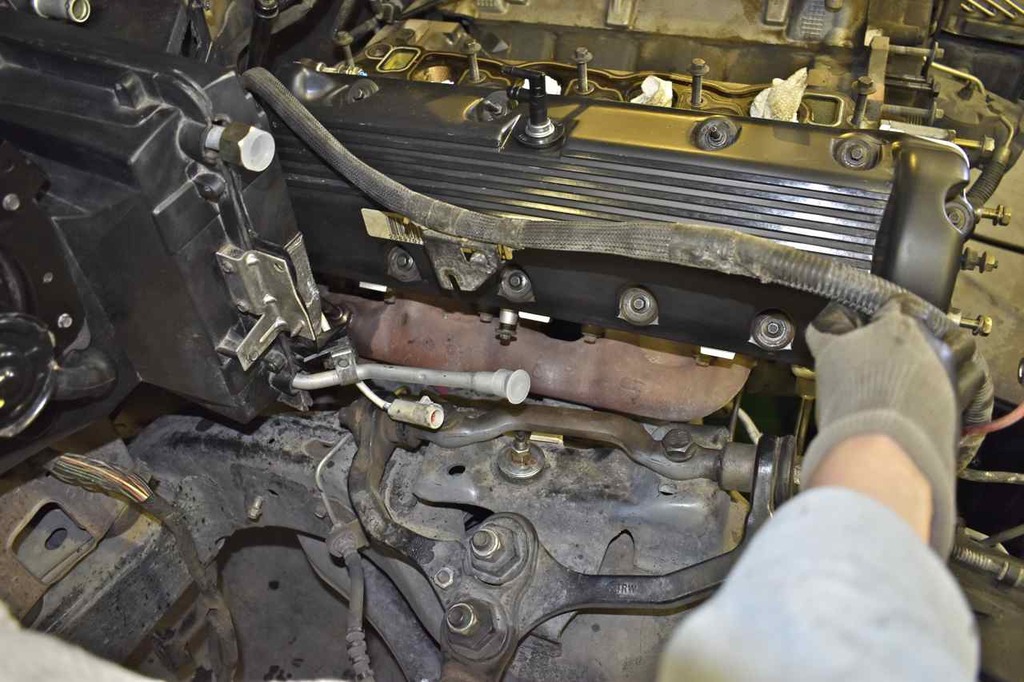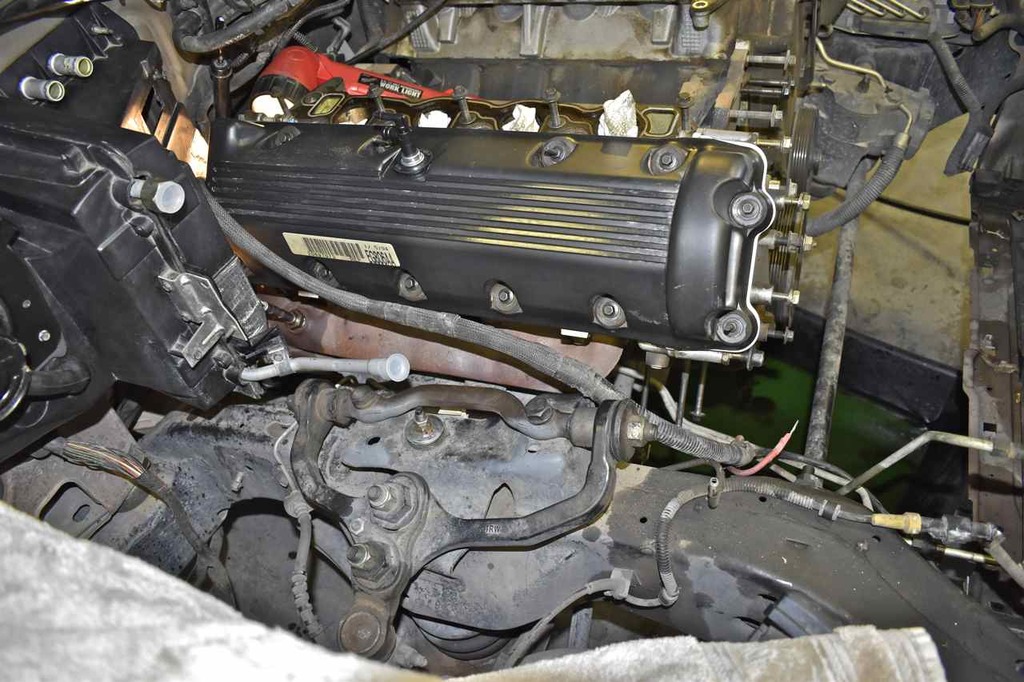1994 Mercury Grand Marquis, Fixing Up a Used Panther : part 3 Intake Manifold
2023, November 14
part 1 - part 2 - part 3 - part 4 - part 5 - part 6 - part 7 - part 8OK back to the meat and potato's
The O2 sensor can go back in. Actually it never needed to come out, but I thought since everything is out of the way, if it should put up a fight trying to extract it, now is the time to pick that fight and not when it's all back together when you have to change it in the future. Of course antiseize. Loads of antiseize . As a point I use antiseize on all bolts, especially the ones going into aluminum or other alloys.

Crows foot open end works well in that tight location.

Next is the harness that contains the positive and negative battery cables. There are two mountings on the engine for the harness holders. One on the side here (if you look sort of midway on the exhaust manifold you can see the bolt loose in the head.) And the other is on the back side of the pass head.

Here's the other one, you can see the fastener loose on the head back. It's a bi*&%^# err I mean bear to get to.

Once that's tightened you can connect that O2 sensor since that bracket also hold the connector for the pass side O2

Tighten the other one and just drape the harness down in front.

Next take a cutter and CAREFULLY slice off the crimp cuff holding the hose to the metal pipe.

Old one off and new silicone hose with stainless hose clamps to go one (this will outlive me)

That coolant hose uses these two fasteners to hold it to the back of the pass head. My advice is on the stud, just use it to locate the tube and tighten the bottom bolt for now and remove the stud. Sure you can leave the stud in but it gets a little in the way for attaching the EGR valve back on. I mean why make matters worse if you don't have to, right...

Coolant pipe installed.

Can install the water pump. Just make sure the cavity area where the O-ring sits is clean. This is 23 years of corrosion around that area so I spent some time smoothing it back out so that little O-ring has a chance of sealing. Also it goes without saying never install that with a dry O-ring. Use either petroleum jelly or synthetic grease.

Torqued down and pulley installed.

For the intake being 23 years old I am electing to change the O-rings on the injectors as that's the one leak you do not want (high pressure fuel).
It's important to clean the bosses where the O-rings go into the manifold. So take fuel rail off, injectors and clean good. Also clean out the carbon in the EGR slots on the throttle body interface area.

This is was just funny. I found the analog gauge temp sensor wedged down in the manifold. It's never been installed. My humorous guess is that on the factory line the analog gauge cluster being the majority the line worker grabbed a sensor for that then looked at the build sheet and this engine was destined for a digital dash car so he probably said screw it and tossed this sensor in there and got the correct one for the digital dash.

Cleaned the heads making sure intake gaskets are correct.

Cleaned intake

Both the intake and heads have pitting from old coolant so contrary to using silicone gaskets you'll want to smear RTV around these ports so they don't leak, because otherwise they will.

New thermostat and O-ring

Torqued down

With the Ford part number still on the old thermostat here and its condition I would wager it's the original. Now it's pretty much common that a stuck closed thermostat (overheated engine) is a death sentence for aluminum heads. As the chances for warping or cracking is greatly increased.
So always good idea to change the thermostat if uncertain on age.
